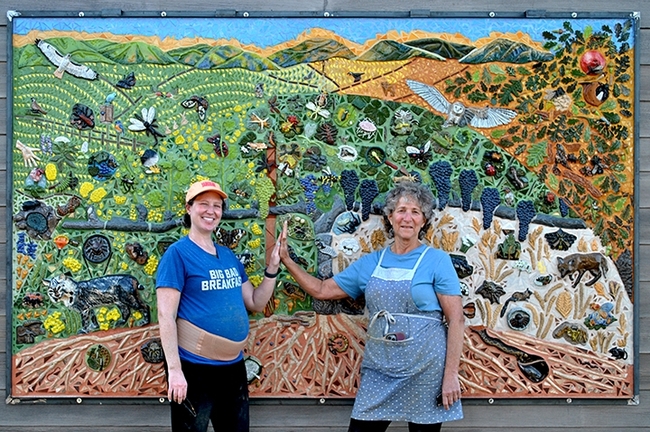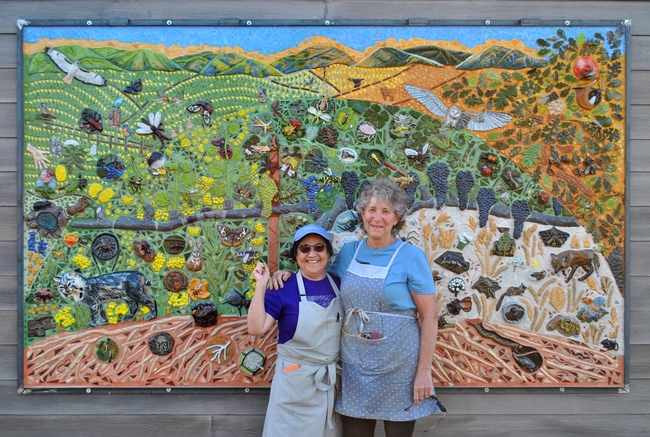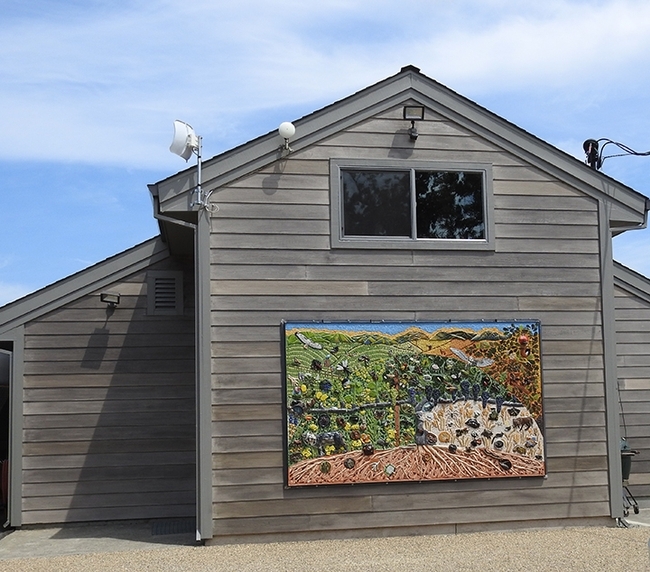- Author: Kathy Keatley Garvey
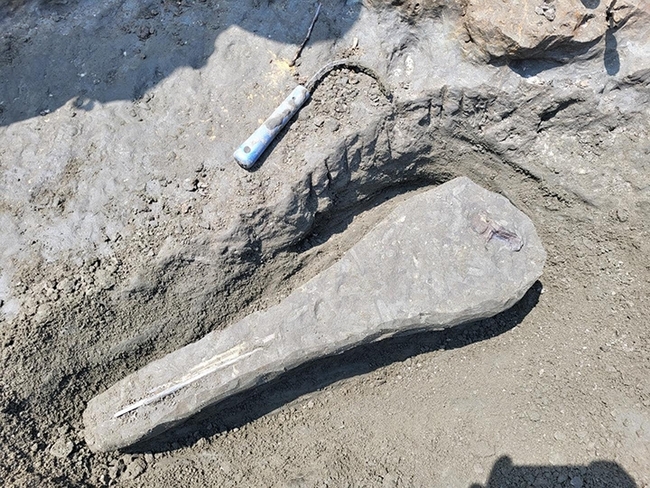
Leave it to an eagle-eyed entomologist accustomed to searching for elusive bees to find it.
Emily Bzdyk, who holds a master's degree in entomology from UC Davis, is making national headlines, but not about insects this time.
Bzdyk is garnering widespread news coverage for discovering a 15-million-year-old dolphin skull along the western shore of the Chesapeake Bay in Calvert County, Maryland.
Bzdyk, a volunteer at the Calvert Marine Museum on Solomons Island, said she was combing the shores along the Calvert Cliffs on Saturday, Aug. 5, when she noticed what appeared to be a two-foot-long fossil bone in the shallow water.
It turned out to be a fossil from the Miocene Epoch, the first geological epoch of the Neogene Period. The Miocene epoch extends from about 23.03 to 5.333 million years ago.
Stephen Groff, manager of the Calvert Marine Museum's fossil collection, described it as “a really impressive find,” noting that “it's rare to find a skull in such good condition.”
Bzdyk estimated it will probably take a few months for her to clean the silt and clay from the fossil and prepare it for permanent public display at the museum. Visitors to the museum (open daily from 10 a.m. to 5 p.m.) are watching her clean the fossil.
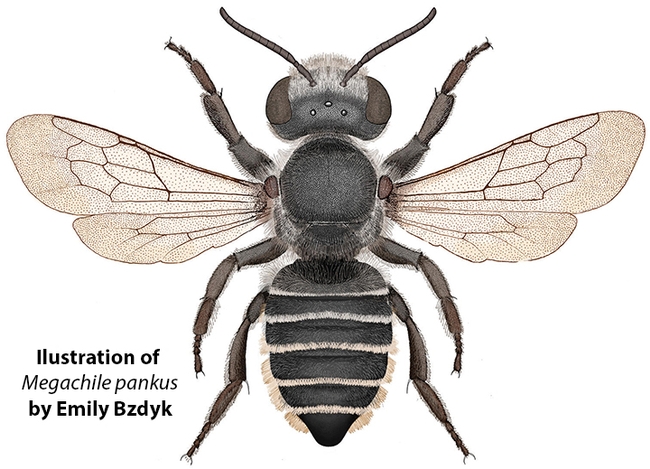
A native of Long Island, N.Y., Emily received her bachelor's degree in biology in 2008 from St. Mary's College of Maryland (SMCM), St. Mary's City, where she minored in environmental studies and studio art. Her senior thesis? A Guide to Native Plants of Historic St. Mary's City, which she also illustrated.
Bzdyk returned to SMCM in 2016 as a visiting instructor of biology. She served as an adjunct faculty member until May 2019.
Her friends says she has an eagle eye for discoveries. She credits her entomological training with that. "Many years in entomology didn't hurt!"
NBCWashington.com headlined her fossil discovery as "Big Win: Woman Finds 15 Million-Year-Old Dolphin Skull Along Chesapeake Bay."
Mike Murillo of WTOP News, which serves the Washington, D.C., area, said that the "Dolphin fossil found in Calvert County could help 'write the books' on ancient marine mammals...It is not uncommon to find fossils from marine mammals. Dolphin skulls are typically found twice a year in southern Maryland. But this find, according to Groff, stands to be the most intact of the finds. It could also turn out to be a species that was previously not known about."
Murillo noted that "During the Miocene period, when the marine mammal swam the earth, the sea level was much higher, according to Groff. What is the beach now was once the ocean floor. Now, as the ocean is eroding away part of the beach, more fossils are being uncovered."
In addition to her interests in biology, entomology and paleontology, Bzdyk enjoys incorporating her scientific illustration and photography skills in her work. She served as a scientific illustration intern at the Smithsonian Institute, Washington, D.C. in the summer of 2008.
Bzdyk shares her interests in her blog, "Sentimental Entomologist" (Thoughts about insects, birds, nature and life) at http://sentimentalentomologist.blogspot.com/.
In her blog profile, she describes herself as: "I have always loved insects and I studied them in graduate school. Bees, to be precise. I focused my thesis on Litomegachile, a subgenus of Megachile leafcutter bees. I discovered a new species of bee, and published one paper on these bees before I hung up my scientist hat to become a stay at home mom. But that won't stop insects from finding their way into my life."
She also maintains an Instagram account on her discoveries at https://instagram.com/hastalishunter.
Meanwhile, Bzdyk's Facebook page, containing the links to the news coverage, is drawing scores of comments, such as:
- "You are so freaking cool. Awesome find."
- "Emily, I just watched the NBC clip. So excited for you!! What an incredible find—more specifically, what an eye you have for treasures below the sand!!!Have a wonderful adventure as you uncover more about your 15 million YO dolphin skull!!!"
- "They even got in a bug joke! Super cool." ("Entomologist by training, but been bitten by a different bug")
- "You're famous now! Can I have your autograph?"
- "Way to go, Emily! Super exciting!"
Bzdyk is a 2010 alumna of the globally recognized The Bee Course, an annual 10-day workshop sponsored by the American Museum of Natural History and held at the Southwestern Research Station, Portal, Ariz. One of her instructors was noted bee authority Robbin Thorp 1933-2019), UC Davis distinguished emeritus professor of entomology. Thorp and Professor Neal Williams of the Department of Entomology and Nematology served on her guidance committee, along with research entomologist Tom Zavortink of the Bohart Museum.
Her husband, Troy Townsend, an associate professor in the Department of Chemistry and Biochemistry at SMCM, received his doctorate in inorganic chemistry in 2013 from UC Davis. He studied biology and chemistry at SMCM, obtaining his undergraduate degree in 2007. The couple has two daughters, ages 6 and 9.
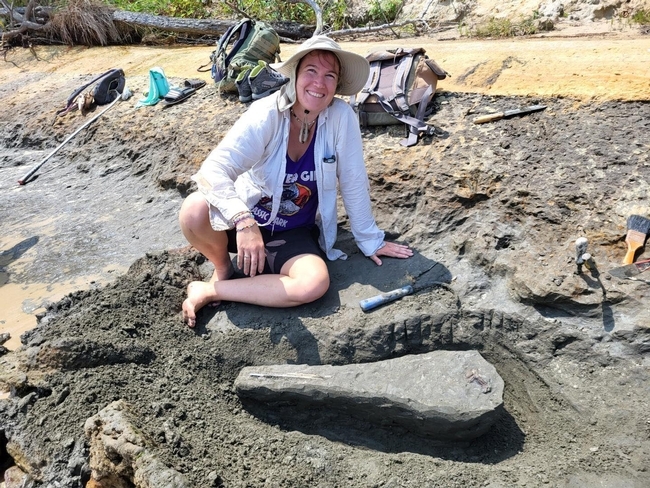
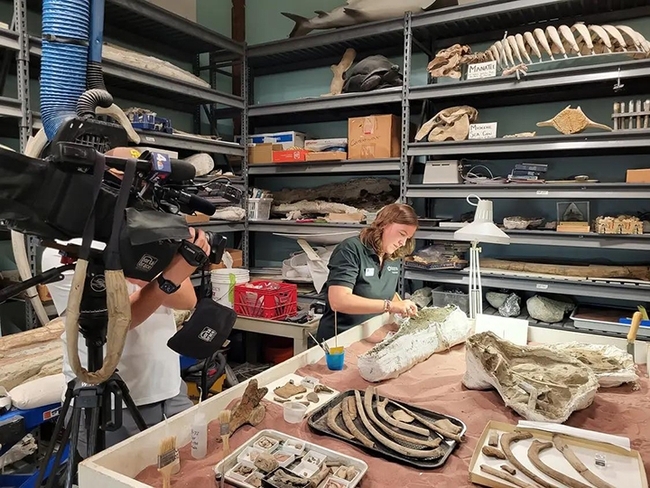
- Author: Kathy Keatley Garvey

Sunday, Aug. 27: Praying Mantises
Saturday, Sept. 23: Household Vampires
Saturday, Nov. 4: Monarchs
The open houses, free and family friendly, take place from 1 to 4 p.m. in the insect museum, located in Room 1124 of the Academic Surge Building, 455 Crocker Lane, UC Davis campus. Parking is free.
At each event, the focus is on the special theme, and there's also a family arts-and-crafts activity. You can see insect displays and hold the Madagascar hissing cockroaches and stick insects from the live petting zoo.
The museum, founded in 1946, is directed by UC Davis distinguished professor Lynn Kimsey. It houses a global collection of eight million insect specimens. In addition to the petting zoo, it houses a year-around, insect-themed gift shop.
Meanwhile, how many praying mantises (or praying mantids) have you seen this year? Or in past years?
What were they eating?
This mantis is a Stagmomantis limbata, as identified by Lohit Garikipati, a UC Davis alumnus studying for his master's degree at Towson University, Md.
It nailed a cabbage white butterfly, Pieris rapae. As a caterpillar, P. rapae is a major pest of cole crops such as cabbage.
This time the menu did not include "bee."
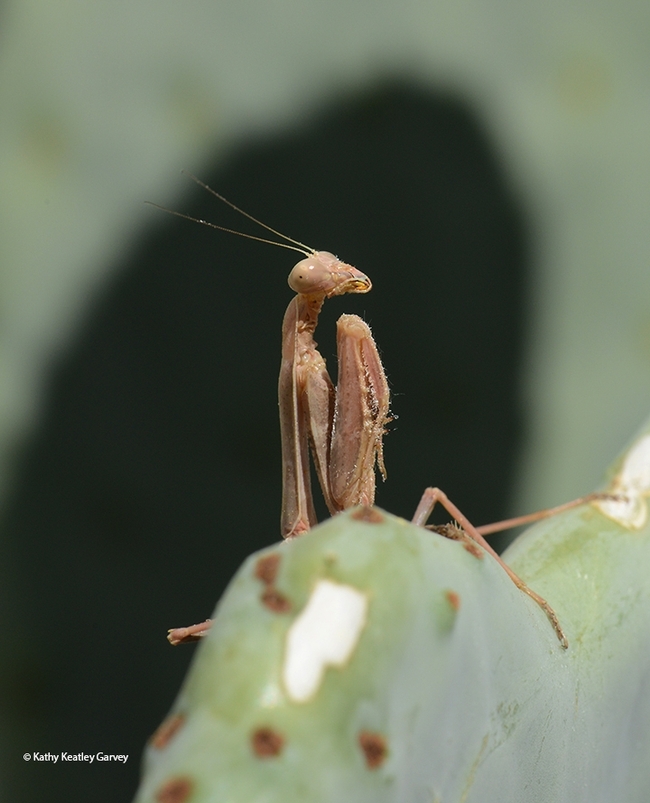
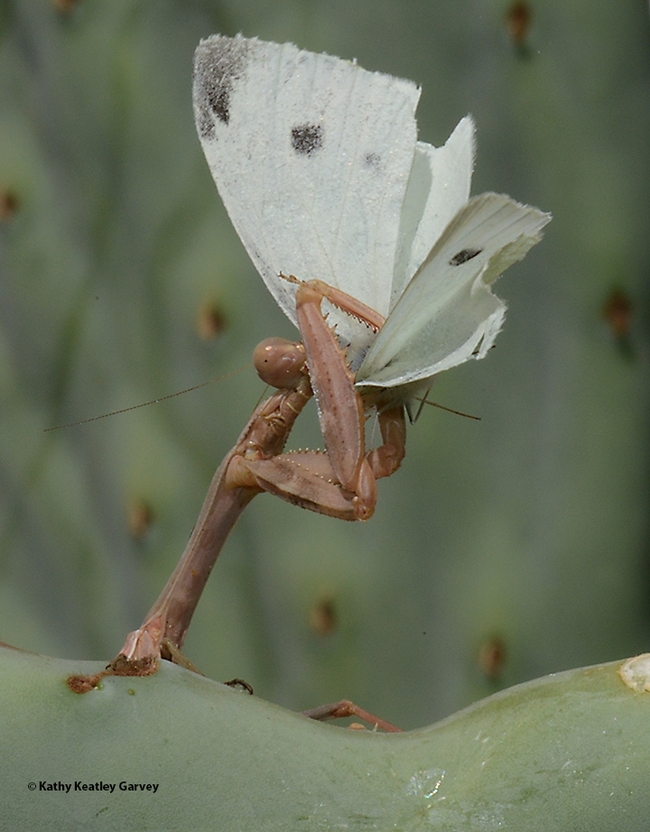
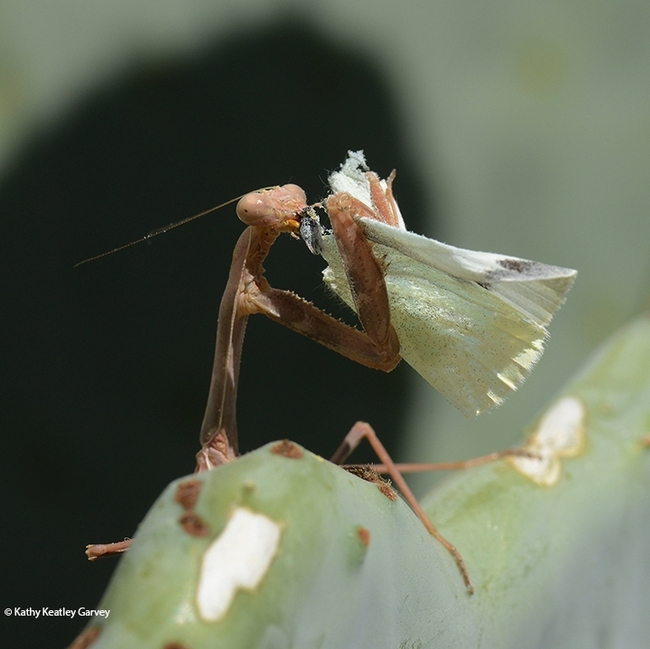
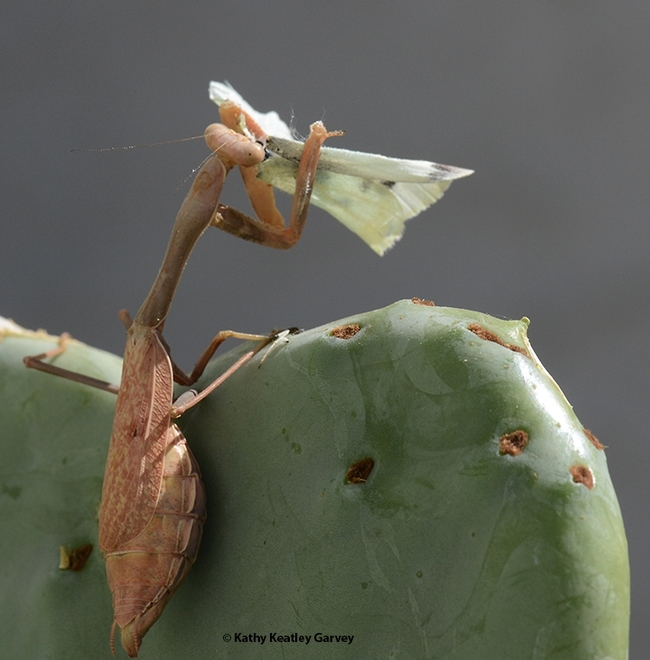
- Author: Kathy Keatley Garvey
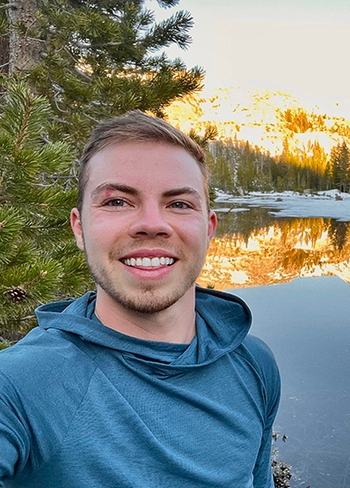
So when we viewed KQED's Deep Look video, “This Fly Torpedoes a Bindweed Bee's Nest,” on YouTube at https://youtu.be/gJHCoP4WqMc, we were totally amazed. It's nothing short of spectacular.
The crew filmed the bees in a nesting area outside the UC Davis Stebbins Cold Canyon Reserve, near Winters.
UC Davis scientists Shawn Christensen, a fifth-year doctoral candidate in the laboratory of community ecologist Rachel Vannette, UC Davis Department of Entomology and Nematology, were among those collaborating with the Deep Look production.
“Shawn has done a lot of work on this bee and with Deep Look, and he also leads our lab's work on Anthophora bomboides, a bumble bee mimic, and studies microbial associates of pollen and solitary bees,” said community ecologist and associate professor Rachel Vannette, a Chancellor's Fellow and vice chair of the Department of Entomology and Nematology.
The bees, also known as digger bees or chimney bees, are specialists on bindweed, commonly known as morning glory. “The females use pollen only from one plant species and are active through the late spring and early summer,” said Vannette, an international leader in microbial ecology who studies interactions between plants, insects and microbes.
Native to California, the bindweed turret bees dig underground nests, many with structures called turrets at the nest entrance. They provision the nests with pollen for their future offspring, and then lay their eggs inside.
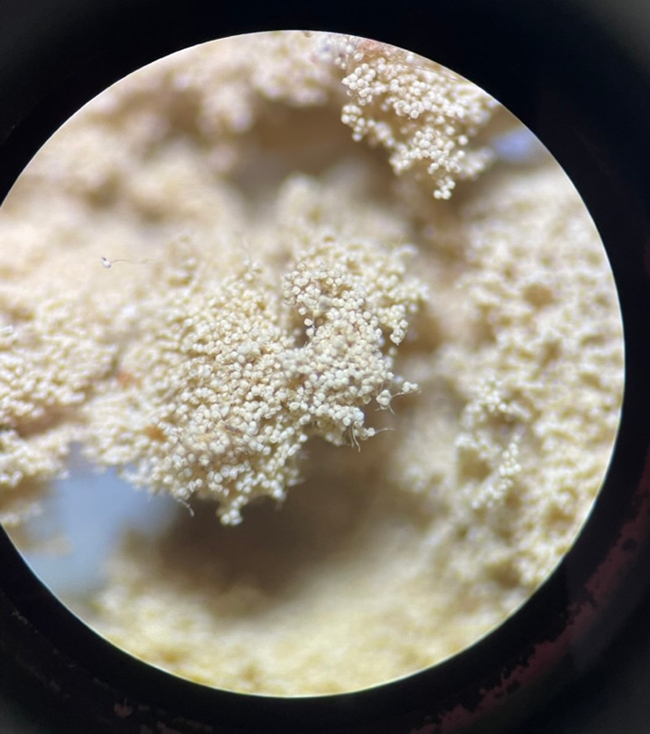
Quirós also consulted with seven other scientists: Stephen Buchmann, University of Arizona; Andy Calderwood, Ventura County Deputy Agricultural Commissioner; Neal Evenhuis, Bishop Museum of Honolulu, Hawaii; Paul Havemann, UC Davis Natural Reserve System; Keng-Lou James Hung, University of Oklahoma; Doug Yanega, UC Riverside, and James Carey, a naturalist who researches and videos bindweed turret bees in the Santa Monica Mountains National Recreational Area.
Josh Cassidy, the lead producer and cinematographer, filmed all the footage except for the male bees fighting with each other (00;17;14- 00;25;22 in the video). James Carey, who filmed that incredible footage, “has been regularly monitoring and filming bindweed turret bees since 2016 in Rancho Sierra Vista/Satwiwa, an open space in the Santa Monica Mountains,” Quirós said. “James also filmed the shot at 04;17-04;21 showing nests in the Santa Monica Mountains covered up at the end of the nesting season."
Christensen, a member of the UC Davis Microbiology Graduate Group and anticipating his doctorate in the spring of 2024, is an evolutionary biologist turned microbiologist. Christensen also researches other native bees, including Melissodes and Colletes.
Vannette focuses her research on the chemical and microbial ecology of plant-pollinator interactions and how microbes influence plant defense and resistance against insect pests. On its website, the Vannette lab is described as "a team of entomologists, microbiologists, chemical ecologists, and community ecologists trying to understand how microbial communities affect plants and insects--sometimes other organisms, too. We often study microbial communities in flowers, on insects or in soil. We rely on natural history observations, and use techniques from chemical ecology, microbial ecology and community ecology. In some cases, we study applied problems with an immediate application including pathogen control or how to support pollinators.”
We're looking forward to more research from the Vannette lab, including their work on Anthophora bomboides, a bumble bee mimic that forms turrets in sand dunes (including the sand cliffs at Bodega Head).
Most people are unaware that there are more than 20,000 known bee species in the world, and 4,000 of them are native to the United States. Of the 20,000 known bee species, 70 percent are ground-nesting bees. California alone is home to more than 1600 species.
And just one of those species is the bindweed turret bee, Diadasia bituberculata, that forages on morning glories. Glory bee...
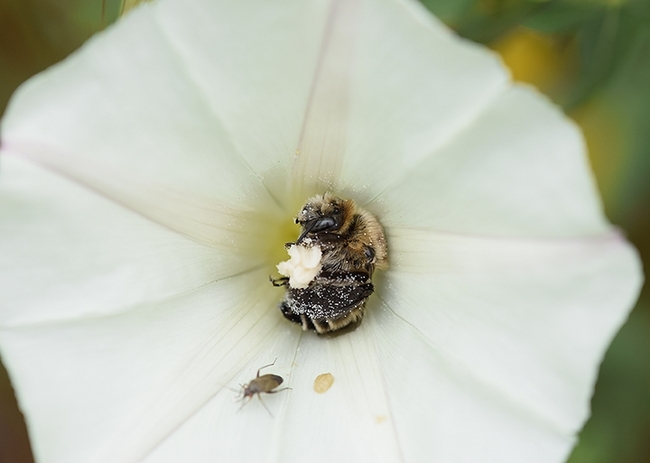
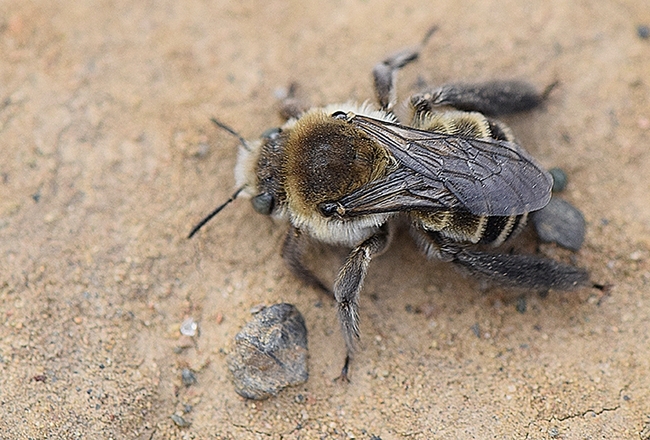
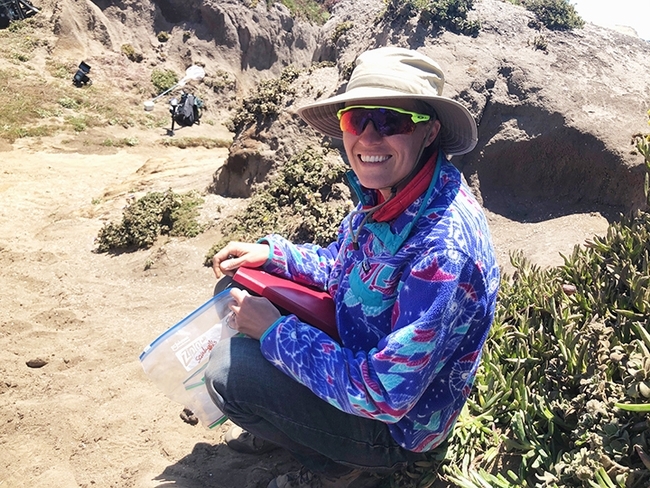
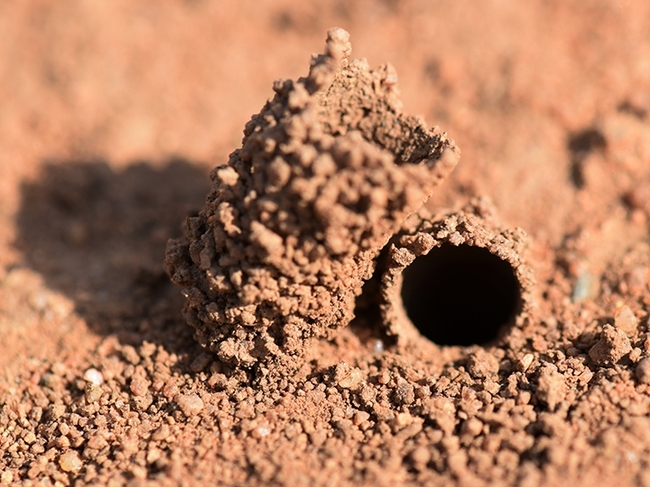
- Author: Kathy Keatley Garvey
And just like that, a female monarch butterfly fluttered into our Vacaville pollinator garden this morning, Aug. 10, and left a dozen or so calling cards: precious eggs.
We earlier saw a male monarch patrolling the garden on the morning of July 23, but he left to go find the girls.
So, total number of monarchs sighted in our garden so far this year: 2. (In 2016, we counted more than 300 eggs and caterpillars.)
Ms. Monarch deposited eggs on three milkweed plants: a narrow-leafed milkweed, Asclepias fascicularis, and two tropical milkweeds, Asclepias curassavica. She favored a lone tropical milkweed thriving in a planter. It's already attracted honey bees, leafcutter bees, syrphid flies, crab spiders, cabbage white butterflies, Gulf Fritillaries, mourning cloaks, gray hairstreaks, Western tiger swallowtails, ants, aphids, and a young praying mantis lying in wait.
Ms. Monarch totally ignored the showy milkweed, Asclepias speciosa, that towers over the garden. Not for me, she seemed to say. Ditto on the butterflyweed, Asclepias tuberosa.
We managed a few images of Ms. Monarch in flight, several images of her laying eggs, and a couple of the ever-so tiny eggs clinging beneath the leaves.
Welcome, Ms. Monarch. Now go tell all your buddies where to find the milkweed of your choice, and the rich nectar sources such as Mexican sunflowers (Tithonia rotunifola).
And you better warn them about that praying mantis...
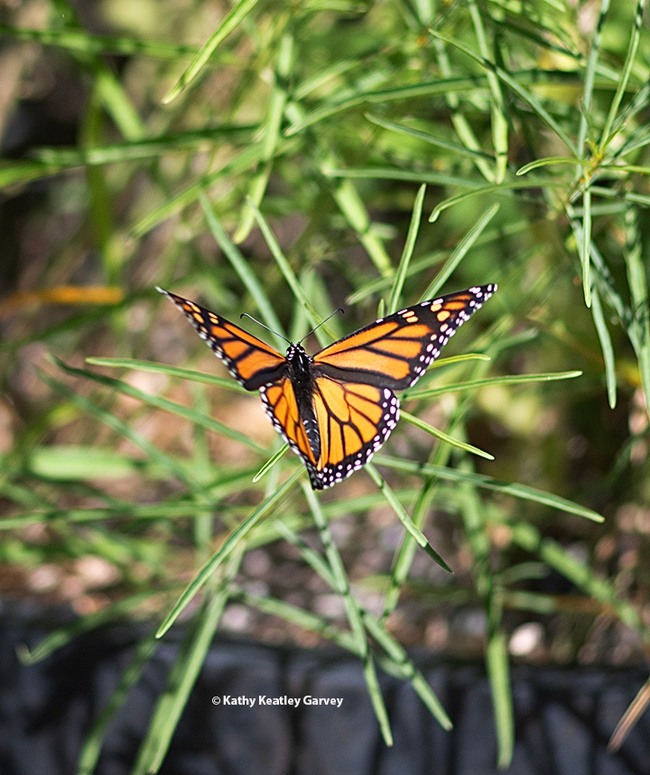
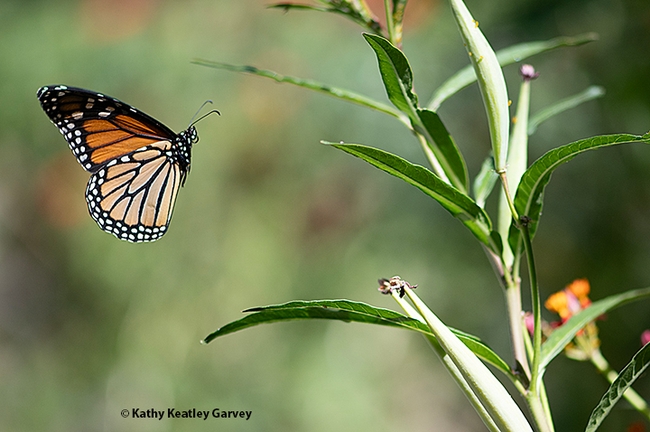
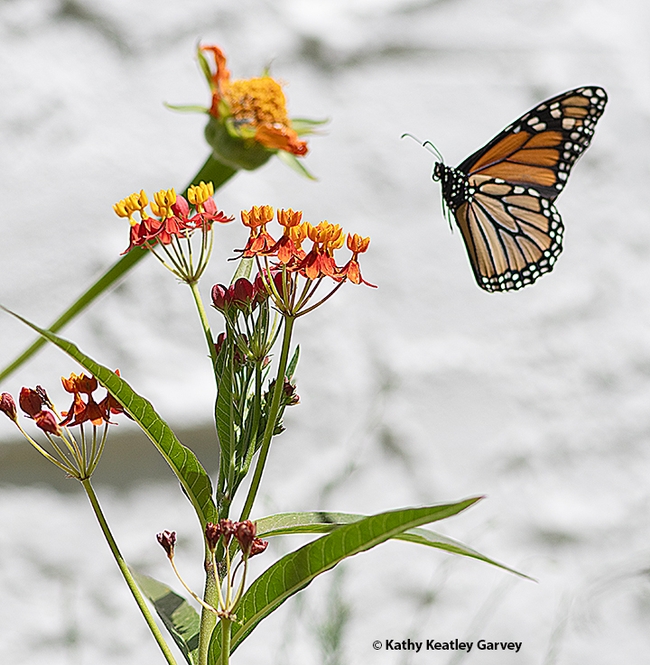
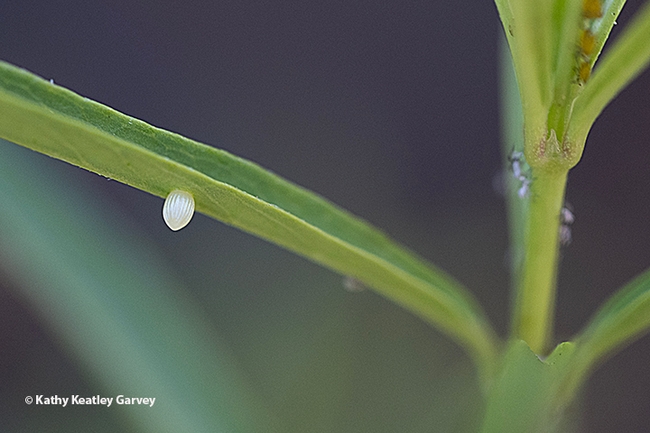
- Author: Kathy Keatley Garvey
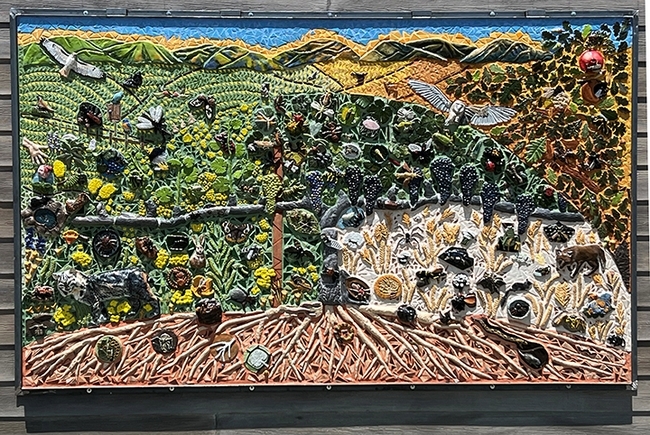
A UC Davis team created the insect-themed ceramic-mosaic mural that was recently installed at the Matthiasson Winery, 3175 Dry Creek Road, Napa.
Measuring 10 feet wide by six feet in height, it will be unveiled at an invitation-only celebration on Wednesday, Aug. 16. That's when “creators, artists, students, and volunteers will see the results of their hard, fun, and educational work creating the incredibly detailed tile mosaic mural depicting The Secret Life of Vineyards,” announced Jesse Galvan, director of hospitality for Matthiasson Wines.
The project sprang to life in a spring quarter class, Entomology 001, “Art, Science and the World of Insects,” taught by two UC Davis entomologists/artists: UC Davis Distinguished Professor Diane Ullman and assistant professor Meineke, an urban landscape entomologist.
Ullman, founding co-director of the UC Davis Art/Science Fusion Program, described the project as “a collaboration between students and instructors in ENT 001; community members from Davis, Woodland, and Napa, and Matthiasson Winery; and the UC Davis Art/Science Fusion Program. Gale Okumura (retired lecturer, UC Davis Department of Design) greatly assisted with the design and also helped train students in the ceramics technique for creating their artwork.”
In a joint statement, Ullman and Meineke related that the Secret Life of Vineyards “was designed to reflect the ecosystem within and around an organic vineyards as it progresses from early spring to harvest. A Cabernet Sauvignon vine is the centerpiece of the mural, shown from the first bud in the spring to harvest time in the autumn. The artworks include more than 80 arthropods (insects, spiders and centipedes), several bird species, mammals (bobcat, deer, rabbits, squirrels, a pocket gopher), a gopher snake, mycorrhizal fungi and even earthworms. The work is an ode to the importance of biodiversity and balance in the ecosystem in which wine vines are grown and reflects the passion of the Matthiasson Winery for sustainable viticulture.”
The directors created a PowerPoint detailing the progression of the art work and the artists' descriptions. They include such descriptions as:
Harrison Ford Spider. Nicholas Nguyen a civil engineering major, depicted the Harrison Ford spider, Calponia harrisonfordi, described by arachnologist Norman Platnick of the American Museum of Natural History in 1993. “In real life, the spider is only around 5 millimeters and much of its biology and physiology is unknown, though it's thought to eat other spiders,” Nguyen wrote. “For the design, I incorporated Indiana Jones' hat as an homage to one of Harrison Ford's most well-known roles. The hat is subdued under the roots as if a farmhand accidentally left it there after a break out of the sun or if Indy transformed into the spider of his actor's namesake.”
“C. harrisonfordi is the quintessential example of legacy,” Nguyen added. “The spider legacy of an archaeologist, blade runner, space smuggler and also environmentalist, activist, actor and ultimately hero, Harrison Ford.”
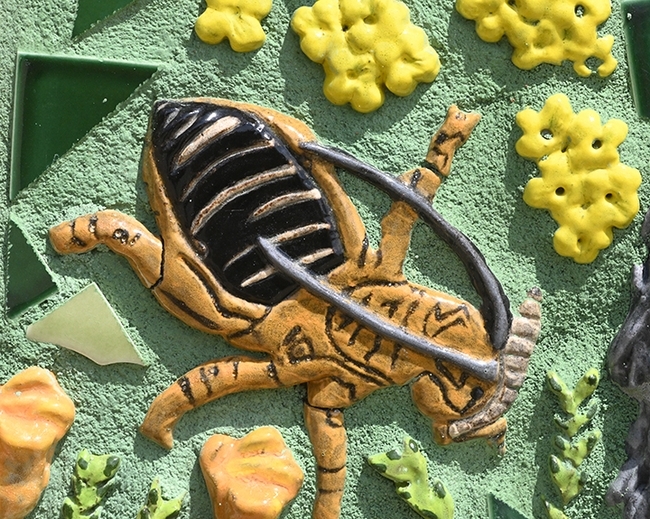
“I wanted to represent the insect scavenging for a waxworm,” Montes related. “I wanted to show that this insect appears aggressive, but also to grant visual diversity within the insect activity throughout the mural. Although many would think that the potato bug is big, clunky, and serves no purpose other than to scare people, researching the insect gave me much more insight on the importance this insect has in the environment, especially in vineyards.”
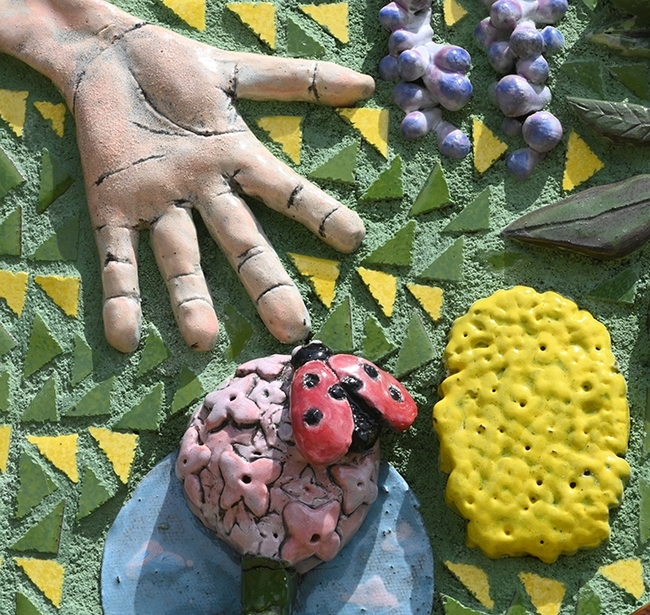
"In my design," Zhou explained, "I aimed to depict the harmonious interaction between C. californica and California buckwheat in wine yield, representing their interdependence and the beauty of their collaboration. The adjacent human is releasing the beetle to the buckwheat, representing the excellent relationship between humans and the California lady beetle. I aim to inspire people to contemplate the profound connections and interdependencies within ecosystems. The collaboration between C. california, humans, and California buckwheat serves as a reminder of the delicate balance and interconnectedness of all living beings. By celebrating the beauty of this symbiotic relationship, we can foster a deeper appreciation for nature's intricate tapestries."
Be sure to access the PowerPoint to read about all the artists' descriptions of their work. And read more about the project here.
